When Do Babies Laugh? Baby Giggles and Development

You’re watching your baby stare at the ceiling fan for 20 minutes. You pull a goofy face. Make a ridiculous sound. Suddenly — they giggle. Boom. You’re hooked.
For many parents, the waiting before you hear your baby's laugh for the first time is filled with anticipation and excitement. Hearing that laugh for the first time is an unforgettable moment, marking a special milestone in your journey together.
That laugh? It’s more than just cute. It’s a developmental milestone, and it tells you that your baby’s brain, emotions, and social instincts are all wiring up the right way.
Baby development is a journey filled with exciting and important milestones, each marking a new chapter in your little one’s life. Babies typically start laughing by 3 to 4 months old.
The Science of Baby Laughter
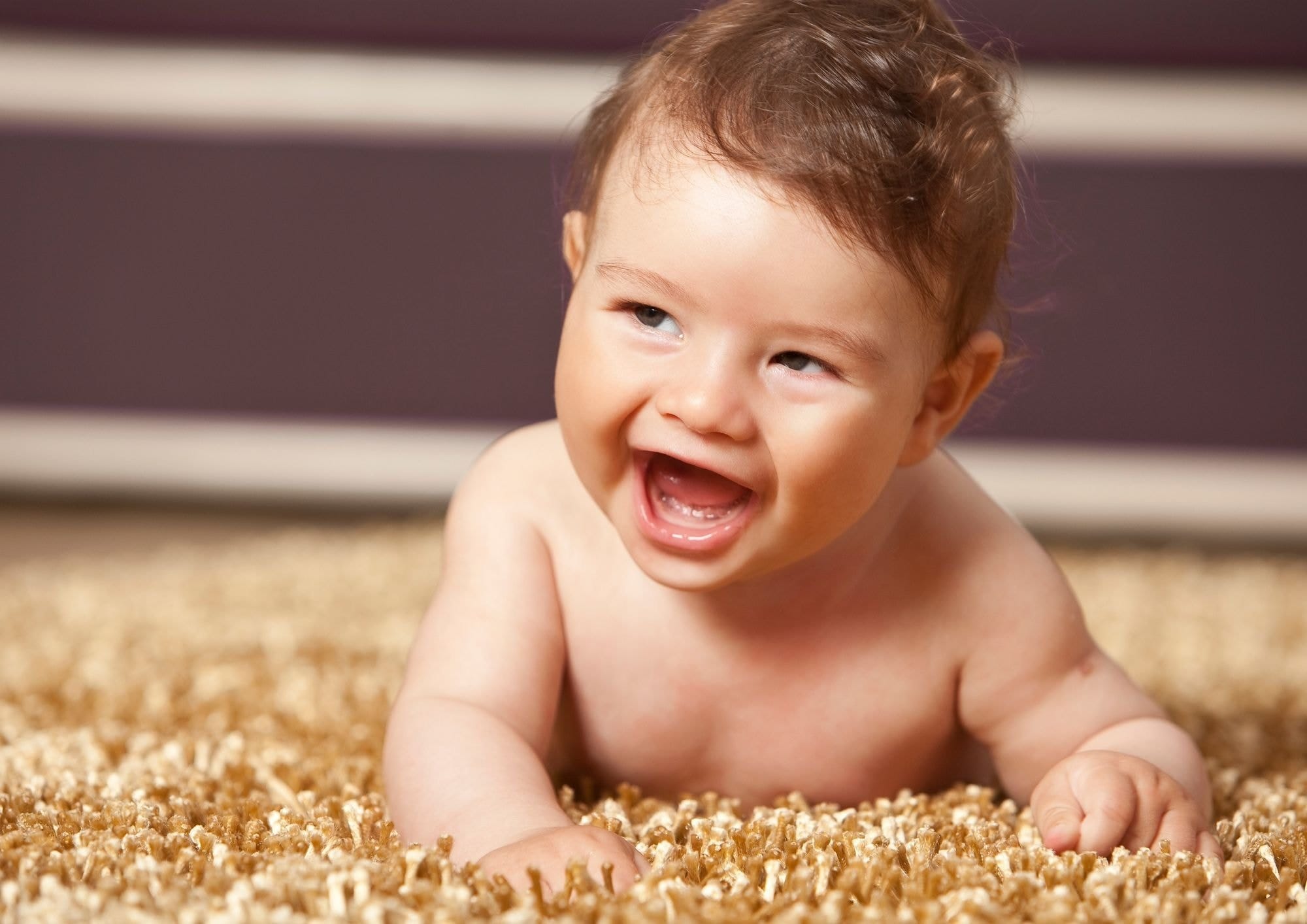
What Laughter Actually Means in Infants
Here’s what’s wild, laughter isn’t just joy. It’s biology. Neurology. Communication. When a baby laughs, their brain is firing on multiple levels.
Studies using functional MRI scans show that laughter activates regions of the brain tied to emotion, social processing, and reward like the amygdala, prefrontal cortex, and ventromedial prefrontal cortex (VMPFC). It’s a full-brain workout.
Babies also use their mouth to practice making different sounds, moving their mouth and tongue as they learn to laugh and communicate.
And no, it’s not just a reflex. Laughter is learned. Which means your baby isn’t just reacting, they’re understanding. Responding. Connecting.
In short: if your baby laughs, they’re not just cute. They’re developing like champs.
When Do Babies Start Laughing?
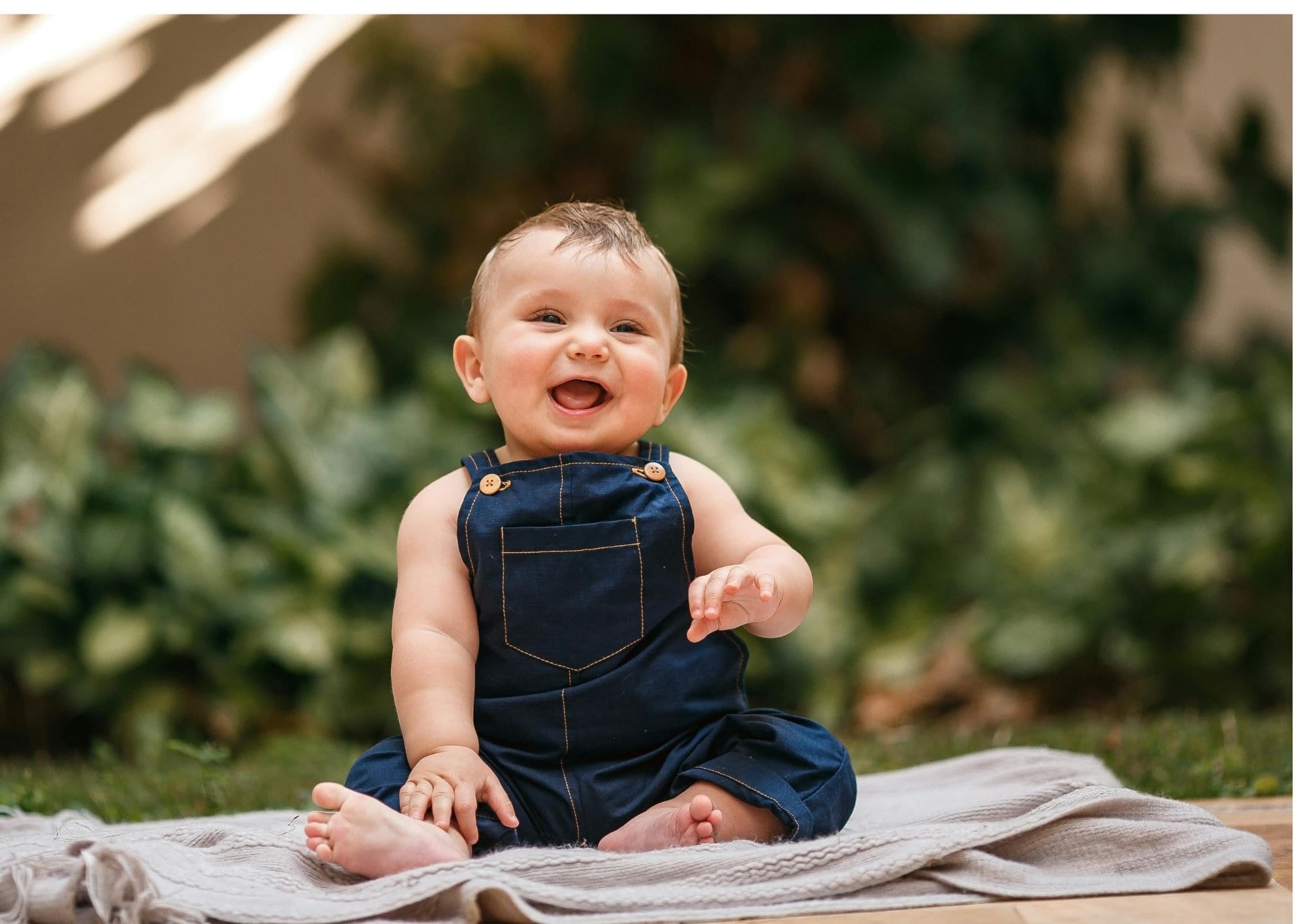
The Average Timeline (Backed by Research)
Let’s hit the numbers first. According to the CDC’s developmental milestones and supported by pediatric studies:
- Most babies start laughing between 3 to 4 months old
- Some begin as early as 2 months
- Others take until 5 or even 6 months
Most babies are laughing by 6 months, and reaching this milestone is an important part of early social and communication development.
Here’s what the American Academy of Pediatrics (AAP) adds: By 4 months, babies should start to show genuine social smiles and brief giggles. If not, it might be time to check in with your pediatrician.
But don’t panic — some perfectly healthy babies just take their time.
The Laugh Progression: What It Looks Like Month by Month
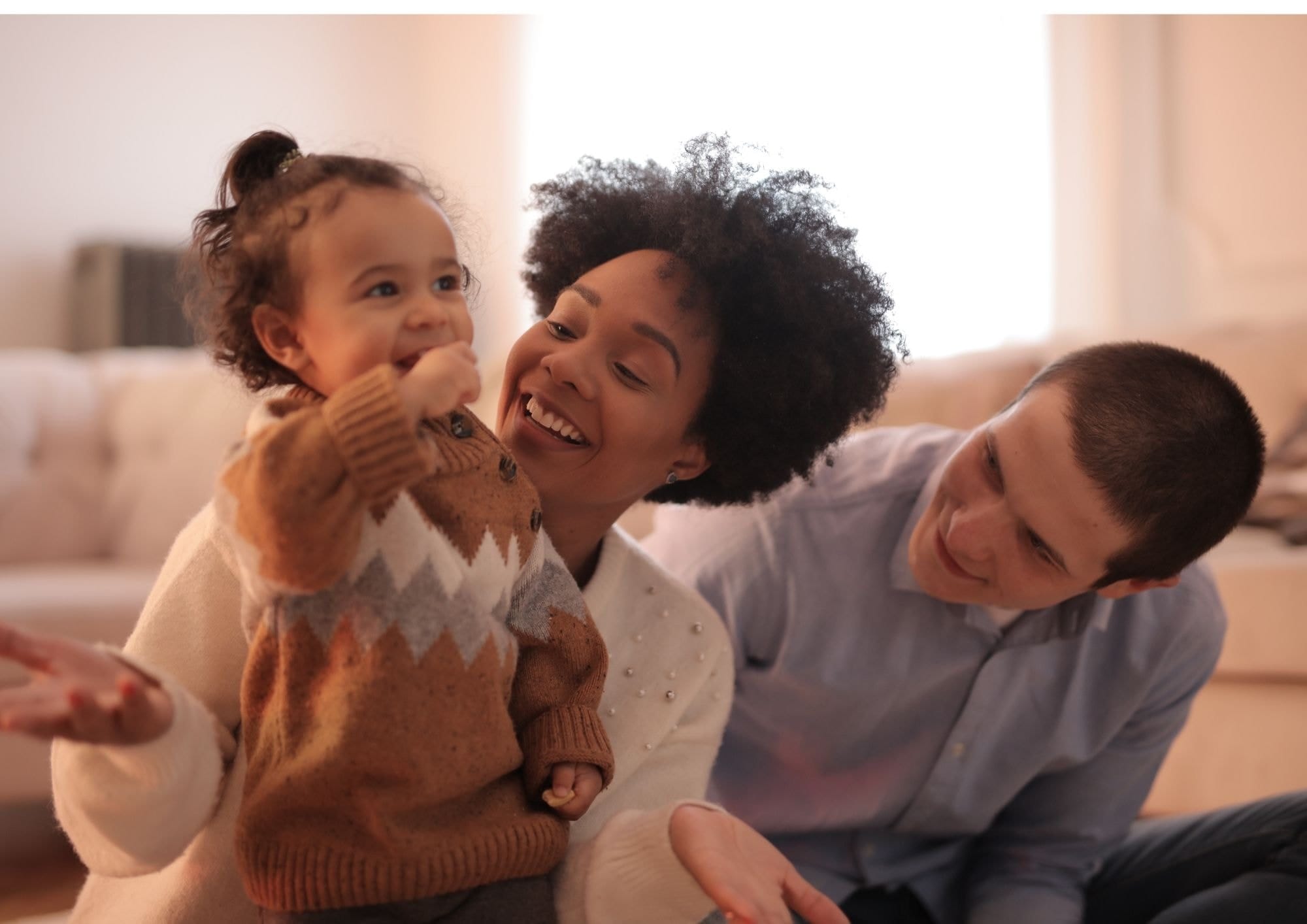
0–2 Months: No Laughs Yet But a Lot Is Happening
At this stage, newborns are recognising faces, voices, and tone of voice as part of their early communication methods. That recognition? It’s step one toward social laughter. They’re tuning into emotional cues even if they can’t express them yet.
At the newborn stage, communication is primarily through crying, which is their main way to express needs or discomfort before other social signals develop.
You’ll get reflexive smiles here. The kind that happens in their sleep. Cute, but not laughter.
2–3 Months: Social Smiles and Cooing
Big shift here. Around 6–8 weeks, you’ll start seeing real smiles. That’s your baby saying, “Hey, I know you. You make me feel safe.”
Cooing starts around the same time. They’re experimenting with sound — getting their voice ready. Babies begin practicing vowel sounds and enjoy hearing their own voice as they discover new ways to vocalize. This is the launchpad for laughter.
3–4 Months: The First Giggle
This is where it gets fun. Most babies will let out their baby's first real laugh—often called the baby's first laugh—during this window. This milestone marks baby's first big social sound. Usually triggered by:
- High-pitched silly voices
- Peekaboo
- Funny facial expressions
- Gentle tickling
At this stage, you might notice a difference between early giggles and a true laugh. The true laugh is a genuine, intentional sound that signals your baby's growing social and emotional development.
It’s a soft, breathy sound. Not quite a belly laugh. But it’s magic.
4–6 Months: Full-On Laughter
By this stage, babies are laughing out loud. This is often the stage when a baby starts laughing for the first time, marking an important developmental milestone. You make a weird noise? Instant giggle. You drop a spoon? Hysterical.
By six months, young babies have typically laughed and are developing a sense of humor as their cognitive abilities grow.
Why? Because their brain is starting to understand cause and effect, timing, and anticipation. Humor, in its simplest form.
Research from the University of London shows that laughter is closely tied to predictive processing — meaning babies laugh when something unexpected happens in a safe context. Peekaboo is literally a brain-building game.
Why do Babies Laugh?
Babies laugh for all sorts of reasons, and often, it’s the simplest things that get those sweet giggles going. Funny noises, silly faces, and exaggerated facial expressions are classic triggers that make babies laugh. Sometimes, it’s a parent’s funny sound or a playful peekaboo that brings out a baby’s first real chuckle. Laughing is much more than a reaction—it’s a way for babies to communicate their feelings and connect with the people around them. As babies start to laugh, they’re not only showing happiness but also building the foundation for social development. Every giggle is a step toward learning how to interact with others, understand emotions, and enjoy the world. Parents can encourage laughter by making funny sounds, pulling silly faces, and engaging in playful activities, helping their babies develop a sense of humor and a love for joyful interaction from an early age.
Why Laughter Matters (It’s Not Just for Fun)
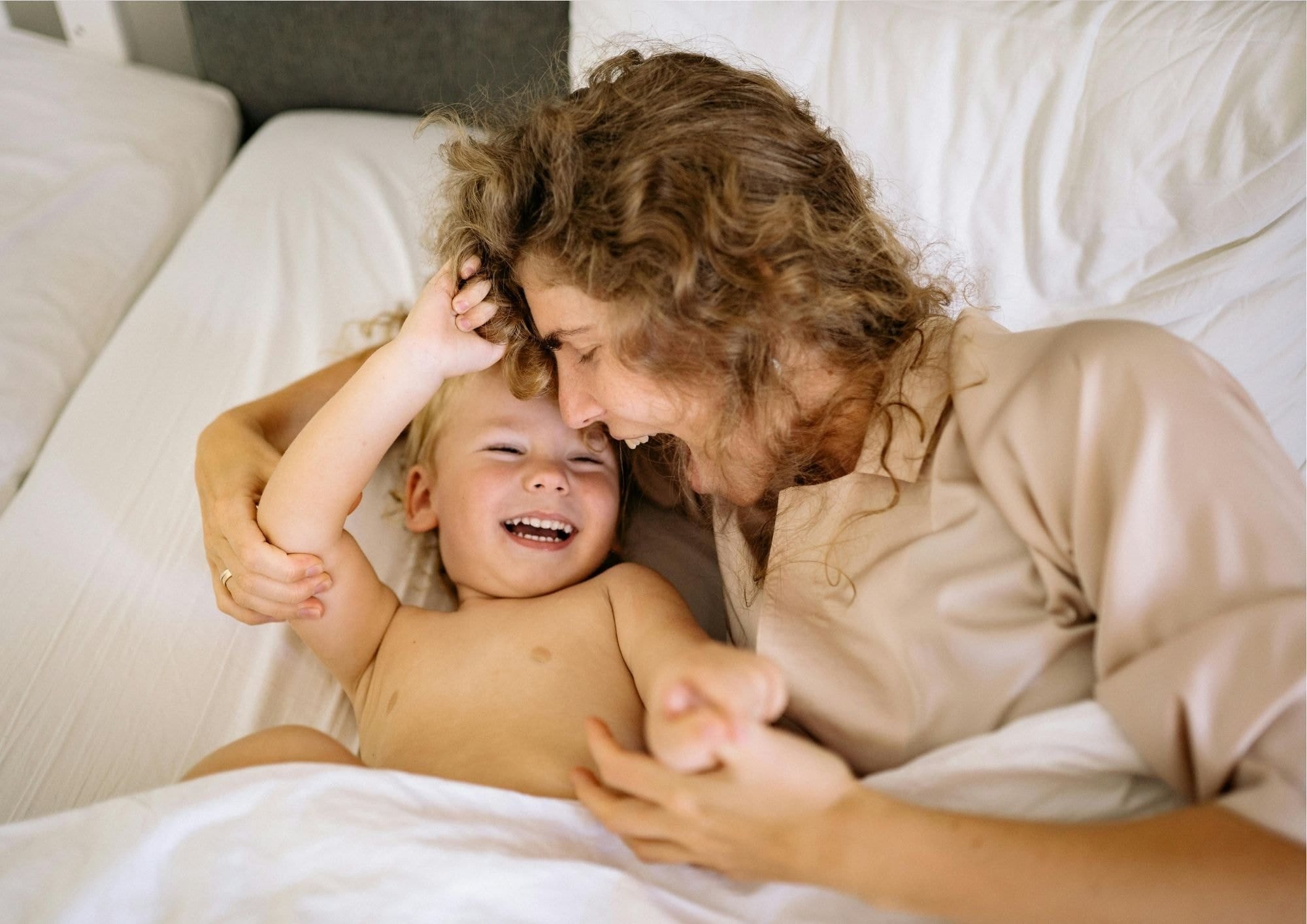
Emotional and Social Development
When your baby laughs, they’re learning more than how to be happy. They’re learning:
- Trust: You make them laugh, they feel safe with you.
- Social reciprocity: Laughing back and forth is an early form of conversation.
- Emotional recognition: They’re responding to your cues and tone.
Laughter helps your little one build trust and social skills, laying the foundation for healthy emotional development.
According to a study in the journal Developmental Psychology, early laughter correlates with stronger emotional regulation and attachment bonds later in life.
Language Development
Laughing helps develop control over the vocal cords, breathing, and facial muscles. That’s step one toward language.
The back-and-forth rhythm of laughing mimics conversations — even before your baby says a single word. These early vocalizations and laughter pave the way for babies to start saying simple words like "mama" and "dada" as they grow.
In fact, a study from the University of Washington found that babies who engaged in frequent “proto-conversations” (like smiling, giggling, cooing back and forth) at 4–6 months had larger vocabularies by 18 months.
Cognitive Development
Let’s get nerdy for a second. Babies laugh when something surprises them but still feels safe. That balance of novelty and security is crucial for brain growth.
As babies begin to understand cause and effect, this cognitive development makes babies laugh at things like peekaboo or silly sounds, because they start to predict outcomes and find joy in the unexpected.
Jean Piaget, the developmental psychologist, called this “schematic violation.” Basically — their brain says “wait, that’s new,” but also “okay, not scary.” That contrast = laughter = learning.
Baby’s First Laugh and Communication
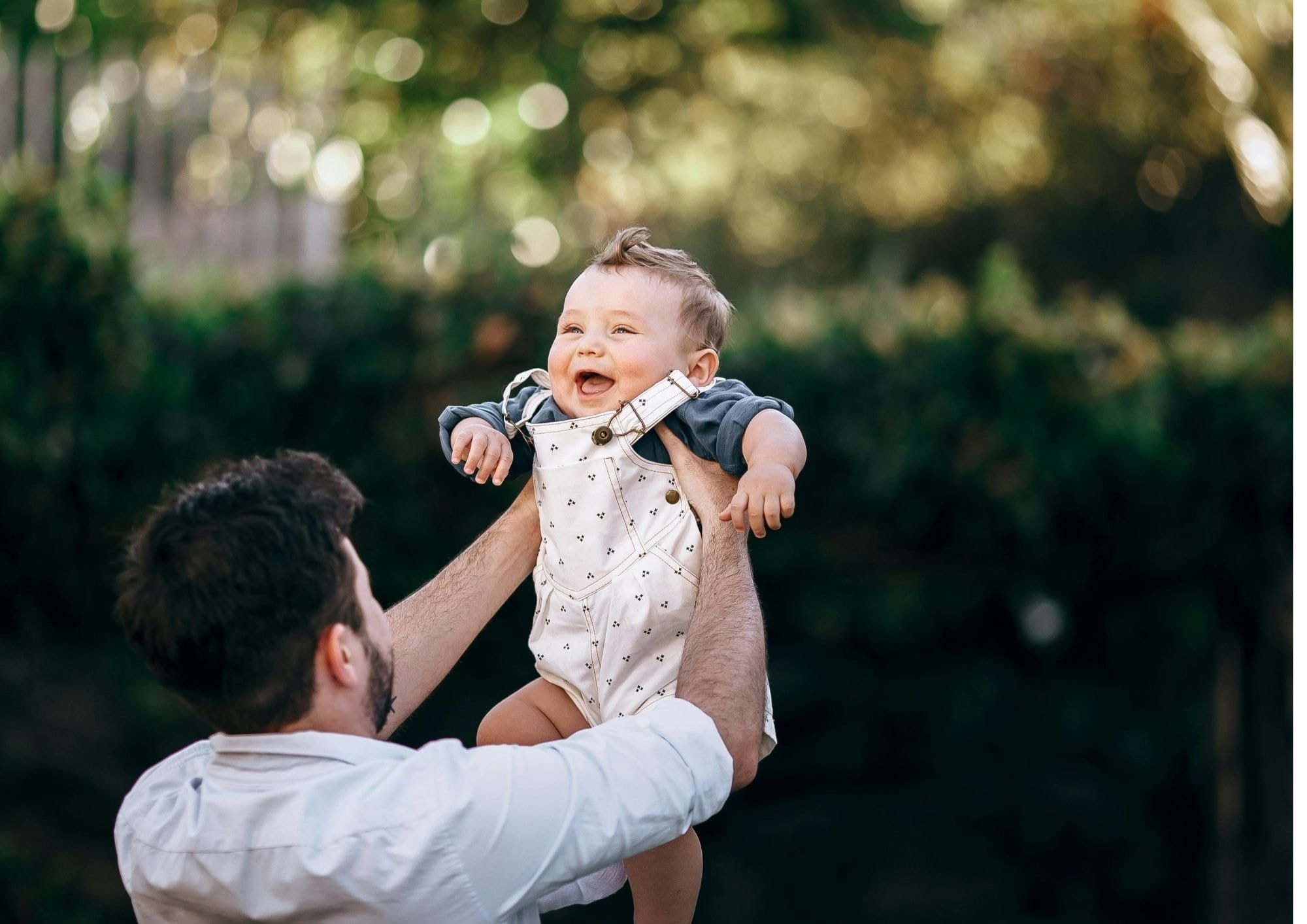
A baby’s first laugh is a magical milestone that marks the beginning of true communication. When babies start laughing, it’s their way of reaching out, expressing joy, and connecting with their parents and caregivers. This first laugh is more than just a cute moment—it’s a sign that babies are learning to interact with their environment and the people in it. Babies learn to laugh by watching and imitating those around them, picking up on the rhythms of conversation and the fun of shared moments. As babies start laughing, they’re also developing important social skills, learning how to respond to others, and building the foundation for future communication. Parents play a key role in this process by responding to their baby’s laughter, engaging in playful back-and-forth, and encouraging their little ones to express themselves. Every shared giggle helps strengthen the bond between parent and child and supports healthy social development from the very beginning.
The Importance of Play in Baby’s Laughing
Play is at the heart of a laughing baby. When parents engage in playful activities like peekaboo, pat-a-cake, or blowing raspberries, they’re doing much more than just entertaining their little ones—they’re helping babies develop essential social and emotional skills. Playful moments encourage babies to laugh, explore their sense of humor, and learn how to interact with the world around them. These activities are not only fun but also crucial for social development, as they teach babies about turn-taking, anticipation, and the joy of shared experiences. By making play a daily priority, parents can encourage their babies to laugh more often, helping them grow into happy, confident children. Plus, play supports cognitive development, giving babies the chance to practice problem-solving and critical thinking in a safe, loving environment. So, whether it’s making funny faces, blowing raspberries, or inventing new games, every playful moment is a building block for your baby’s laughter and lifelong happiness.
Why Some Babies Laugh Later

Don’t Compare Timelines
Development isn’t a race, babies develop at their own rate. Some babies are observers first. They’ll sit back and soak it in, then surprise you one day with a full-blown giggle fit.
Here are some factor that might delay laughter (and none of it means something’s wrong):
- Temperament: Some babies are naturally more reserved
- Premature birth: Can push milestones back by a few weeks or months
- Low stimulation: Babies need interaction — if they’re not getting enough face time, they may laugh later
When to Be Concerned
Red Flags Around Laughing
Alright, time for the hard stuff. If your baby isn’t smiling or showing joyful reactions by 6 months, talk to your pediatrician. Not to scare you — just to be safe.
According to the CDC’s developmental surveillance:
- No smiling or joyful expression by 6 months
- No babbling by 6–9 months
- No eye contact or interest in people
These can be early signs of developmental delays, including autism spectrum disorder (ASD). Early help works. The sooner, the better.
How to Encourage Baby Laughter
Be the Entertainment
Here’s the good news. You don’t need fancy toys. Or apps. Or $200-a-month music classes. You are the best toy.
Here’s what works:
- Peekaboo: Classic for a reason. Predictable surprise = giggle factory.
- Tickling: Gently. Let your baby lead.
- Silly noises: Animal sounds, weird voices, fake sneezes.
- Face play: Big expressions. Eyebrows up. Cheeks puffed.
- Mirror play: Babies love their reflections and yours too.
- Repeating sounds: Mimic their coos and see how they respond.
And here’s the key: repetition. Babies thrive on it. Do it again. And again. And again. Boring for you. Brain fuel for them.
Create a Laugh-Friendly Environment
You want your baby to laugh more? Give them safety, space, and stimulation.
- Talk to them all day: Even if it feels dumb. Narrate what you’re doing. They’re listening.
- React to their sounds: Make it a game.
- Let them see your face: A lot.
- Limit screen time: No app or video replaces human connection. (AAP recommends zero screen time under 18 months, by the way.)
Laughing and Bonding, It’s Bigger Than You Think
Laughter Builds Attachment
Oxytocin. That’s the love hormone. It spikes when your baby laughs with you. It bonds you. Builds trust. Calms stress — both yours and theirs.
In fact, studies show that laughter synchronises brain activity between parent and baby. Your rhythms match. Your emotions align. That’s how relationships are built.
And that contagious laugh? That’s your feedback loop. You're doing something right.
Key Takeaways
That tiny laugh you’ve been waiting for? It’s not just adorable—it’s a major sign that your baby’s brain, body, and emotions are clicking into gear. Most babies start laughing between 3 to 4 months. Some hit it earlier, some take their sweet time. That doesn’t mean anything’s wrong—it just means your baby’s wiring up their own way.
Every giggle is your baby practicing communication. Every chuckle is a lesson in connection. Laughter builds trust. Boosts language. Fuels brain growth. It’s emotional glue between you and your baby. It’s a sign of safety. Of joy. Of a healthy, developing mind that’s starting to understand the world.
You don’t need to buy anything to make it happen. Just show up. Be silly. Lock eyes. Make weird sounds. Repeat the things that work. Your face is your baby’s favourite show. And that laugh? That’s the standing ovation.
Watch the signs. Know the averages. But trust your instincts too. And if something feels off, like no smiles or joyful reactions by 6 months, talk to your paediatrician early. Don’t wait. Early help works.
In the end, that first laugh isn’t just a milestone. It’s a message. Your baby is learning, bonding, and thriving. You’re not just raising a child, you’re shaping a mind. And if they’re giggling while you do it, you’re doing something right.

